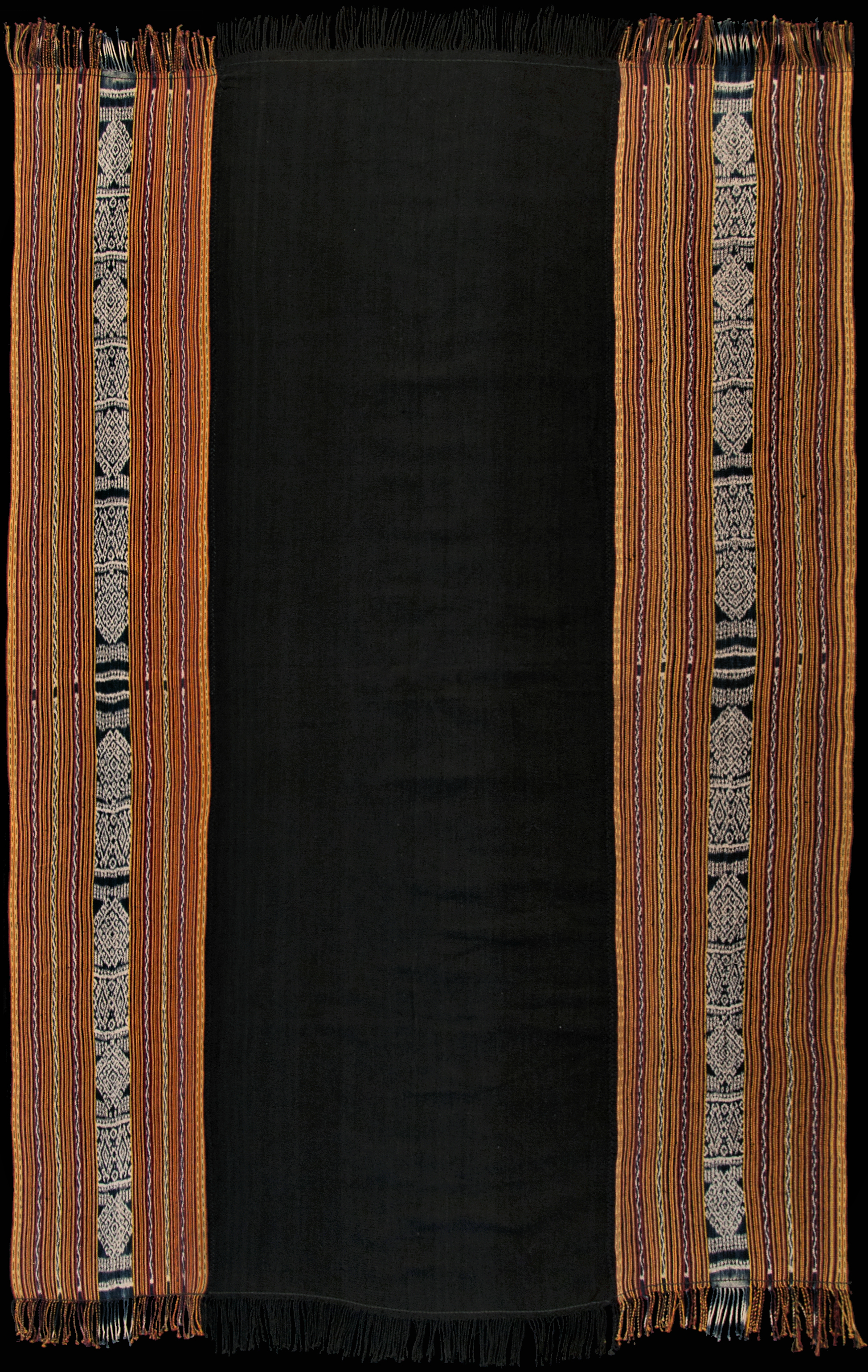| |
 mouse over to magnify mouse over to magnify
| | | | 293 Timor, East Timor
Tais halai laran (shawl)
| | Locale: | Covalima (Cova Lima), Tetun people. | | Period: | 1935-1950 | | Panels: | 3 | | Design: | Barrkman (see below): 'Tais na'in Nurak [alias tais halai naran] was formerly a design associated with the king and with aristocratic clans. Suri Nurak was a liurai of Wehali Kingdom origin who relocated to Suai-Camenaça, hence the name and its association with the aristocracy. Tais na'in Nurak features a koba boot motif, symbolic of the woven basket used for customarily offering betelnut and piper betel leaves (mama) (Areca catechu and Piper betle L.) to ancestors and visitors as part of life-cycle ceremonies. The centrefield of tais na’in Nurak is either plain black or features black linear bands, metan butuk. They are also known in some instances as tais halai laran. The koba boot motifs signify the dignified status of the cloth's wearer.' Note the asymmetry: the left ikated panel is 27.5 cm wide, the right 30.5 cm. | | Size: | 115 x 190 cm (45.2 x 74.8 in) | | Weight: | 1100 g (503 g/m2) | | Yarn: | Ikat areas done in fine hand-spun cotton. Odd mixture of double, triple and quadruple ply. Central panel in coarser hand-spun. The fibres look old, with many split filaments. Age given may be too conservative. | | Comment: | Tais halai laran are aristocratic cloths, reserved for gentlemen for the highest ranks of society. Barrkman described the example she shows as 'a rare cloth'. This one was the second one we encountered in forty years of collecting. The first had the same overall design, but with less variety in the ikated motifs. There is a clear correspondence with motifs used on Kisar sarongs done in the formal style, such as PC 138 and PC 274. Though there is no proof, It is likely that the Kisar/Meher speaking weavers on Kisar were inspired by these motifs. The overall appearance of tais halai laran is strikingly similar to aristocratic men's blankets from Insana, such as PC 149. | | Background: | Additional information in chapters on Timor and East Timor. | | Published: | Timor: Totems and Tokens, 2019.
Ikat Textiles of Timor: Indonesian and Timor-Leste, 2025. | | Compare: | 138 273 274 149 | | Sources: | Very similar to tais halai laran in Barrkman's contribution to Hamilton and Barrkman, Textiles of Timor, Fig. 8.10. Similar to one depicted in Barrkman, Textiles of Covalima, Fig. 4, and to an unidentified, somewhat simpler example from Maliana village, East-Timor, in Gillow, Traditional Textiles of IndonesiaTextiles of West Timor, Fig. 128i. Micro-photo 3 clearly shows the difference between the ikated hand-spun on the left, with its strongly varying gauge, and the pre-dyed commercial thread on the right. Though the cloth looks barely used, show the advanced fraying of the fibre associated with age. | | |
 ©Peter ten Hoopen, 2025
All rights reserved.
|
|


